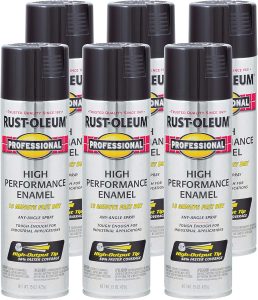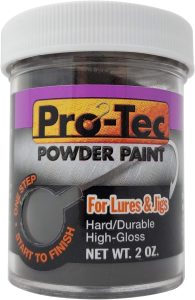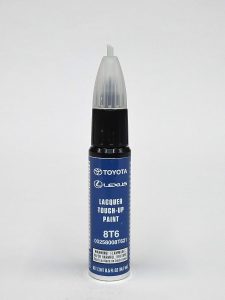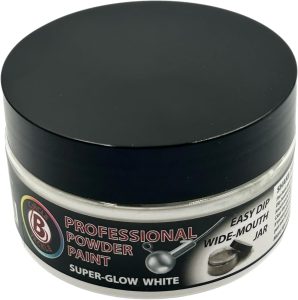If you’re an avid fisherman or hobbyist who loves crafting your own lures, one of the most important aspects of lure making is choosing the right paint. Whether you want to customize your lures with vibrant colors or improve their visibility, the type of paint you use can have a significant impact on the lure’s performance and durability. We’ll explore the best fishing lure paints available, discuss the features to consider when selecting paint, and answer some frequently asked questions to help you get the perfect finish for your custom fishing lures.
Why Paint Your Own Fishing Lures?
Before delving into the best lure paints, it’s worth noting why painting your own lures is so popular among fishing enthusiasts:
- Customization: One of the main reasons for painting lures is to create unique, custom designs. By painting your own lures, you can experiment with different colors, patterns, and finishes to create a lure that stands out in the water and attracts fish more effectively.
- Improved Visibility: Bright, colorful lures can catch the eye of fish from a distance, especially in murky or dark waters. Painting your lures with reflective or fluorescent colors can improve their visibility.
- Durability: High-quality paint can protect your lures from the elements, preventing chipping, scratching, and fading. This means your lures will last longer and continue to perform well after multiple uses.
- Cost-Effectiveness: Custom painting your own lures is often more affordable than purchasing pre-painted, store-bought lures, especially if you have a passion for crafting and want to create a wide variety of designs.
Factors to Consider When Choosing Paint for Fishing Lures
When selecting paint for fishing lures, it’s important to consider several key factors to ensure you achieve a high-quality finish. These factors include:
- Durability: Fishing lures are subjected to rough conditions, including water, rocks, and fish bites. You’ll need a paint that can withstand repeated use without chipping, cracking, or fading.
- Water Resistance: Since fishing lures are constantly exposed to water, it’s important to choose a paint that won’t wash away or degrade over time. Waterproof paint ensures that your custom designs stay intact after multiple fishing trips.
- Flexibility: Fishing lures need to be flexible to endure the bending, twisting, and impacts they experience while being used in the water. Paint that cracks under pressure will not perform well on lures, so choose a paint that can stretch and move with the lure.
- Color and Finish: The color and finish of your paint are crucial in ensuring your lure attracts the attention of fish. Consider choosing vibrant, reflective, or UV-reactive paints that mimic the natural appearance of prey and appeal to various fish species.
- Ease of Application: For DIY lure painters, it’s essential to select a paint that is easy to apply, whether by brush, airbrush, or spray. The application method you choose should be simple and efficient, allowing for even coats and precision detailing.
- Non-Toxic: If you’re using your lures in freshwater environments, it’s always a good idea to choose non-toxic paints. Non-toxic paints ensure that your lures won’t harm the environment or the fish you’re targeting.
Best Fishing Lure Paints
Below are some of the top-rated fishing lure paints available on the market, known for their durability, performance, and ease of use.
1. Createx Airbrush Paint (High Performance)

Best for: Custom airbrushing and intricate designs.
Createx Airbrush Paint is one of the most popular choices for painting fishing lures. This paint is designed specifically for use with airbrushes, making it perfect for those who want to achieve detailed, professional-looking designs on their lures. Createx paints are highly durable, flexible, and offer excellent coverage, ensuring your lures remain vibrant and protected for a long time.
- Features:
- Water-based formula that is safe to use and environmentally friendly.
- Excellent adhesion to plastic, metal, and wood lure surfaces.
- Smooth, even finish when applied with an airbrush.
- Flexible and resistant to cracking, chipping, and fading.
- Pros:
- Great for detailed airbrush designs.
- Versatile; can be used on a variety of lure materials.
- Non-toxic and safe for the environment.
- Cons:
- Requires an airbrush for optimal application.
- May need to be sealed with a clear coat for added protection.
2. Rust-Oleum Stops Rust Universal Enamel Spray Paint

Best for: All-around, durable spray paint for lures.
Rust-Oleum Stops Rust Universal Enamel Spray Paint is a solid choice for lures that need tough, weather-resistant coatings. Known for its high durability and resistance to water and scratches, this enamel spray paint provides excellent coverage and a smooth finish. It’s available in a variety of vibrant colors, including metallic and reflective options, making it ideal for customizing your fishing lures.
- Features:
- High-quality enamel formula for superior durability.
- Provides a smooth, glossy finish.
- Resists chipping, fading, and peeling in harsh conditions.
- Works on a variety of materials, including plastic and metal lures.
- Pros:
- Easy to apply with a spray can for even coverage.
- Weather-resistant and perfect for long-lasting outdoor use.
- Fast-drying and available in multiple colors.
- Cons:
- May not be suitable for detailed airbrush work.
- Requires clear coat for optimal protection in extreme conditions.
3. Pro-Tec Powder Paint

Best for: High-temperature applications and solid color finishes.
Pro-Tec Powder Paint is a great option for anglers who want to create durable, solid-color lures. This powder paint is specifically formulated for heat-curing, making it an ideal choice for creating hard, long-lasting finishes on fishing lures. Pro-Tec offers an extensive color range, including bright fluorescent shades that attract fish effectively.
- Features:
- Requires heat-curing for maximum durability.
- Comes in a wide variety of colors, including fluorescent and metallic options.
- Offers excellent adhesion to metal and plastic lures.
- Heat-resistant and tough enough to withstand rough fishing conditions.
- Pros:
- Creates a hard, durable finish that resists scratching and chipping.
- Ideal for jig heads, spinnerbaits, and other metal lures.
- Offers vibrant, long-lasting color.
- Cons:
- Requires a curing process, so it’s more time-consuming.
- Not ideal for detailed work like airbrushing.
4. Voodoo Custom Lure Paint

Best for: Custom designs with a focus on detailed work.
Voodoo Custom Lure Paint is a specialized paint designed for creating unique, eye-catching patterns and effects on fishing lures. This paint is available in both acrylic and epoxy formulas and is perfect for anglers who want to create intricate designs that mimic the colors of baitfish. Voodoo offers a wide range of colors and finishes, including UV-reactive options that make your lures even more attractive to fish.
- Features:
- Available in both acrylic and epoxy formulas.
- UV-reactive and glow-in-the-dark options for increased visibility.
- Perfect for creating custom designs and patterns on plastic lures.
- Provides a durable, water-resistant finish.
- Pros:
- Excellent for creating realistic patterns and effects.
- Wide variety of color options, including glow-in-the-dark.
- Long-lasting and resistant to fading.
- Cons:
- May require a clear coat for maximum durability.
- More expensive than some other options.
5. LureWorks Lure Paint

Best for: Versatile paint for plastic and wood lures.
LureWorks Lure Paint is a premium paint designed specifically for use on fishing lures. It’s ideal for both beginners and experienced lure makers, as it provides a smooth, even finish that adheres well to plastic and wood surfaces. LureWorks paint is available in a variety of colors, including fluorescent, metallic, and pearl finishes, allowing you to create lures that attract fish in different water conditions.
- Features:
- Provides an even, glossy finish.
- Works well on both plastic and wood lures.
- Offers a wide range of vibrant colors and finishes.
- Resistant to chipping and fading.
- Pros:
- Easy to apply and provides a smooth finish.
- Available in many colors, including UV-reactive options.
- Works well on a variety of lure materials.
- Cons:
- May require multiple coats for full coverage.
- Not suitable for large-scale batch painting.
How to Paint Fishing Lures: Step-by-Step Process
- Prepare the Surface: Clean the lures thoroughly with water and a degreaser to remove any dirt, oil, or residue. If the lure is metal, lightly sand it to create a rough surface for better paint adhesion.
- Prime (If Necessary): Apply a primer if the paint you’re using requires it. This step is especially important for bare metal lures.
- Apply the Paint: Using your preferred application method (airbrush, spray can, or brush), apply the paint in thin, even layers. Let each layer dry before applying the next.
- Detailing: Once the base coat is dry, add any additional colors, patterns, or details you want to include. You can use stencils, decals, or freehand techniques for intricate designs.
- Seal the Paint: After the paint has fully dried, apply a clear coat to protect the design and provide a glossy finish. Choose a clear coat that is waterproof and UV-resistant for optimal protection.
- Cure the Paint: If you used powder paint, cure the lures in an oven according to the manufacturer’s instructions to ensure the paint hardens properly.
Frequently Asked Questions
1. Can I use regular paint for fishing lures?
No, regular paint may not adhere properly to the plastic or metal surfaces of fishing lures. It’s best to use paints specifically designed for lure making to ensure durability and resistance to water and scratches.
2. How long does painted lure paint last?
The longevity of the paint depends on the quality of the paint used, the frequency of use, and the conditions the lure is exposed to. High-quality paints can last for months or even years, but it’s important to reapply a clear coat for added protection.
3. Do I need a special primer for fishing lures?
A primer is often recommended for bare metal or wood lures to ensure proper adhesion of the paint. For plastic lures, a primer may not be necessary if the paint is specifically designed for plastic surfaces.
4. Can I airbrush fishing lures?
Yes, airbrushing is an excellent method for creating detailed and intricate designs on fishing lures. Many lure paints are compatible with airbrushes and allow for precision application.
5. Is lure paint toxic?
Most fishing lure paints are non-toxic and safe for use, but it’s essential to check the manufacturer’s labels for specific safety guidelines. Using non-toxic paint is particularly important if you plan to fish in freshwater environments.
Conclusion
Choosing the right paint for your fishing lures is crucial for creating durable, vibrant, and effective lures that attract fish. Whether you’re a seasoned lure maker or just getting started, there are many high-quality paint options available to suit your needs. By considering factors such as durability, ease of application, and the desired finish, you can achieve professional results that enhance your fishing experience.


Leave a Reply